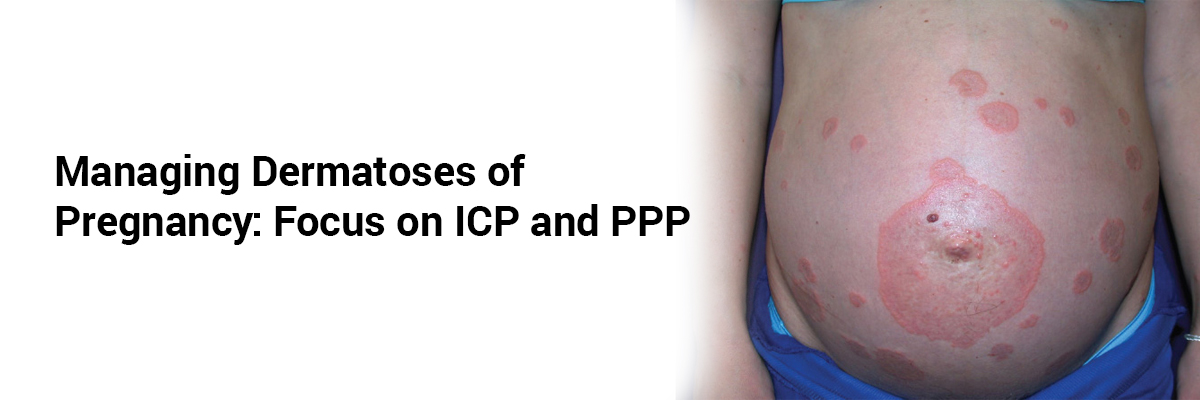
Managing Dermatoses of Pregnancy: Focus on ICP and PPP
Pregnancy induces diverse cutaneous changes, ranging from benign physiological shifts to more serious dermatoses that demand clinical attention. Among these, Intrahepatic Cholestasis of Pregnancy (ICP) and Pustular Psoriasis of Pregnancy (PPP) stand out due to their systemic involvement and potential fetal risk. ICP, typically emerging in the third trimester, presents with intense pruritus and elevated serum bile acids, which may lead to adverse outcomes such as preterm birth and stillbirth. Management centers on ursodeoxycholic acid (UDCA) at 10–15 mg/kg/day (up to 21 mg/kg), which alleviates maternal symptoms by reducing bile acid levels in maternal and fetal compartments. Other supportive therapies include antihistamines, S-adenosylmethionine, and rifampin, though delivery is often recommended at 36–37 weeks, depending on bile acid levels and fetal well-being. In contrast, PPP, a rare but potentially life-threatening dermatosis occurring in late pregnancy, manifests as pustular plaques with systemic symptoms such as fever and nausea. Treatment typically involves oral corticosteroids (prednisolone 15–30 mg/day, titrated up to 60–80 mg if needed), supplemented with topical steroids and, in refractory cases, immunosuppressants such as cyclosporine or TNF inhibitors. Prompt diagnosis and individualized treatment plans are critical to improving maternal outcomes while minimizing fetal risks. Clinicians should remain vigilant, as both conditions may recur in future pregnancies or postpartum, underscoring the importance of preconception counselling and multidisciplinary care.
Source: Dermatoses during Pregnancy. Vol. March–April, Journal of South Asian Federation of Obstetrics and Gynaecology. 2025 May p. 259–63. Available from: https://creativecommons.org/licenses/by-nc/4.0/














Please login to comment on this article